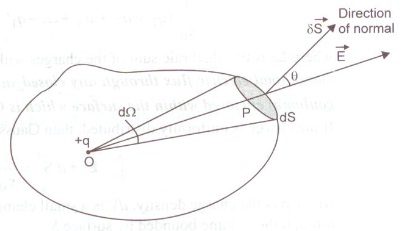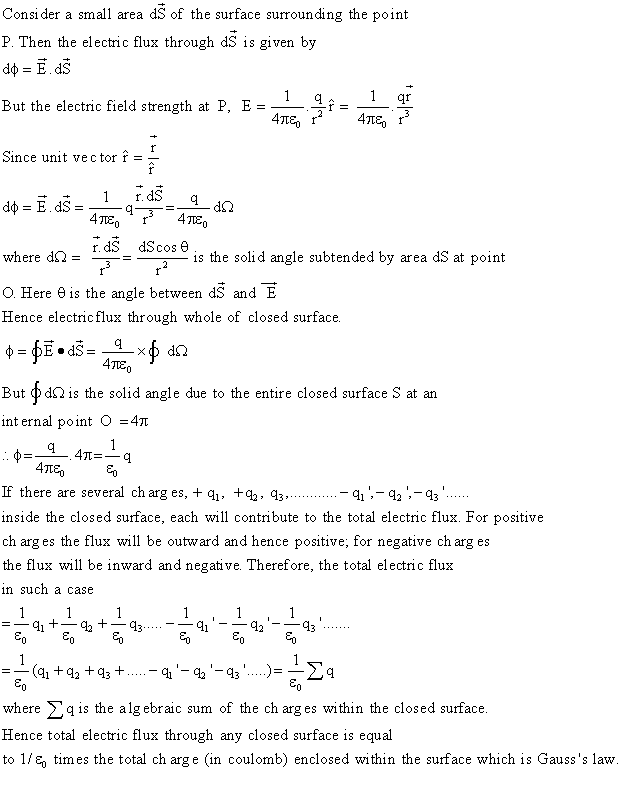Ask questions which are clear, concise and easy to understand.
Ask QuestionPosted by Gitu Kaji 5 years, 4 months ago
- 2 answers
Yogita Ingle 5 years, 4 months ago
The primary reason that power is transmitted at high voltages is to increase efficiency. ... The lower current that accompanies high voltage transmission reduces resistance in the conductors as electricity flows along the cables. This means that thin, light-weight wires can be used in long-distance transmission.
Posted by Gopal Kumar 5 years, 4 months ago
- 1 answers
Gaurav Seth 5 years, 4 months ago
Amplifier – It is a device which is used for increasing the amplitude of the alternating voltage, current or power
An amplifier is an electronic device that increases the voltage, current, or power of a signal. Amplifiers are used in wireless communications and broadcasting, and in audio equipment of all kinds. They can be categorized as either weak-signal amplifiers or power amplifiers.
Posted by ? Yang ? 5 years, 4 months ago
- 2 answers
Gaurav Seth 5 years, 4 months ago
(a) Finding the resultant force on a charge Q
(b) Potential Energy of the system
(a) Let us find the force on the charge Q at the point C
Force due to the other charge Q
This force is directed along AC
For the charge Q, at the point A, the force will have the same magnitude but will be directed along CA) [Note : Don't deduct marks if the student does not write the direction of the net force , F]
(b) Potential energy of the system
Posted by Harshit Agarwal 5 years, 4 months ago
- 3 answers
Yogita Ingle 5 years, 4 months ago
The dielectric constant of metals is infinite.
The dielectric constant of metal is infinite as the net electric field inside the metal is zero.
Posted by Harshit Agarwal 5 years, 4 months ago
- 1 answers
? Yang ? 5 years, 4 months ago
Posted by Rajat Kumar 5 years, 4 months ago
- 1 answers
Sia ? 4 years, 7 months ago
A conducting sphere of radius 10 cm has an unknown charge. If the electric field 20 cm from the centre of the sphere is 1.5 × 103 N/C and points radially inward, what is the net charge on the sphere? Therefore, the net charge on the sphere is 6.67 nC.
Posted by Arif Khan 5 years, 4 months ago
- 5 answers
Rahul Khichar 5 years, 4 months ago
Posted by Sagar Hansda 5 years, 4 months ago
- 2 answers
Yogita Ingle 5 years, 4 months ago
Potential energy of dipole in uniform electric field.
τ = p×E
work done in rotating dipole by small angle
dw = τdθ
= −pεsinθdθ
The change in potential energy
dU=−dW=pEsinθdθ
If θ→90o to θo
U(θ)−U(90o)=∫90o0oPεsinθdθ
=Pε[−cosθ]900
=−P.E
So
U(θ)=−P.E
Posted by Suresh Sharma 5 years, 4 months ago
- 3 answers
Suresh Sharma 5 years, 4 months ago
Suresh Sharma 5 years, 4 months ago
Posted by Pranav Kadyan 5 years, 4 months ago
- 1 answers
Adarsh Singh 5 years, 3 months ago
Posted by Chaithra Chaithra 5 years, 4 months ago
- 1 answers
Posted by Shivangi Thakur 5 years, 4 months ago
- 2 answers
Gaurav Seth 5 years, 4 months ago
Statement of Gauss"s Theorem : The net-outward normal electric flux through any closed surface of any shape is equal to
1/ε0 times the total charge contained within that surface , i.e.,

over the whole of the closed surface, q is the algebraic sum of all the charges (i.e., net charge in coulombs) enclosed by surface S.

Proof of Gauss"s Theorem :
Let a point charge +q coulomb be placed at O within the closed surface. Let E be the electric field strength at P. Let
OP= r and the permittivity of free space or vaccuum be ε0.

.
Posted by Bhavika Singh 5 years, 4 months ago
- 1 answers
Gaurav Seth 5 years, 4 months ago
Given:
Let the initial length of wire=l1
Final length of wire after stretching=l1+(10/100)l1
=l1(1+10/100)
=( 110/100 )l1
= 11/10 l1
Area of initial wire=A1
Area of final wire = A2
Volume of wire remains constant.
l1A1=l2A2
A2=l1A1/l2
As we know that
R = ρ l/A
R1/ R2 =( l1/A1 )/(l2/A2)
= l1A2/l2A1
= l1 (l1A1/l2)/l2A1
R1/R2 = l1^2/l2^2=100/121
R2=R1x121/100
(ΔR/R)×100=(R2-R1/R)×100=21%
The percentage increase in resistance IS 21%
Posted by Bhavika Singh 5 years, 4 months ago
- 2 answers
Yogita Ingle 5 years, 4 months ago
Energy is stored in the capacitor when work is done to move a positive charge from negative conductor towards the positive conductor against the repulsive force.
Posted by Bhavika Singh 5 years, 4 months ago
- 3 answers
Posted by Shubhanshu Tiwari 5 years, 4 months ago
- 0 answers
Posted by Mohd Monish 5 years, 4 months ago
- 1 answers
Yogita Ingle 5 years, 4 months ago
Electric power Definition – It is the rate at which work is done or energy is transformed in an electrical circuit. Simply put, it is a measure of how much energy is used in a span of time.
In physics, the rate of transfer of electrical energy by an electrical circuit per unit time is called electrical power. Here electrical energy can be either kinetic energy or potential energy. In most of the cases, potential energy is considered, which is the energy stored due to the relative positions of charged particles or electric fields. Electrical power is denoted by P and measured using Watt.
Posted by Nargis Ahmed 5 years, 4 months ago
- 2 answers
Gaurav Seth 5 years, 4 months ago
An uncharged metallic sphere will become positively charged when a negatively charged rod is brought near the sphere. This will induce positive charge on the nearer end because the electrons will repel due to negatively charged rod and opposite end will become negatively charged due to the flow of electrons there. Than after it the negatively charged end is connected to earth due to which these negative charges will flow inside the earth and than we remove the rod.So at the end the metallic sphere will become positively charged. This is called as induction.
Posted by Priyanka Jha 5 years, 4 months ago
- 1 answers
Gaurav Seth 5 years, 4 months ago
Two parallel wires P and Q placed at a separation of
6cm carry current 5A and 3A in opposite direction
respectively. Find the point on the line PQ where
resultant magnetic field is zero.
Let say at a distance of d from Q the magnetic field is zero
then distance from P = 6 + d
Magnetic filed ∝ Current / Distance
Mangnetic field by P = k 5/(6+d) (k is Constant)
Magntic field by Q = k 3 /d
k 5/(6+d) = k 3 /d
=> 5d = 18 + 3d
=> 2d = 18
=> d = 9
9 cm away from Q & 15 cm away from P
if current flows in same direction then Magnetic field will in between P & Q will be zero
Let say at a distance of d from P the magnetic field is zero
then distance from Q = 6 - d
Magnetic filed ∝ Current / Distance
Mangnetic field by P = k 5/d (k is Constant)
Magntic field by Q = k 3 /(6-d)
k 5/d = k 3 /(6-d)
=> 6 (6-d) = 3d
=> 36 - 6d = 3d
=> 36 = 9d
=> d = 4
4 cm away from P towards Q
Posted by Alisha 3322 5 years, 4 months ago
- 1 answers
Yogita Ingle 5 years, 4 months ago
Using Gauss's law the flux of the electric field through closed surface is ϕ=∮E.ds=Qenclosed/ϵ0
So if the electric field is zero everywhere, then the flux may be zero.
if charge inside the closed surface is zero, then flux must be zero.
Posted by S P 5 years, 4 months ago
- 4 answers
Posted by Sanika Shimpukade 5 years, 4 months ago
- 2 answers
Gaurav Seth 5 years, 4 months ago
Question:- Two resistances of 100 ohms and 200 ohm are connected in series to a 150 V supply.A voltmeter of resistance of 200 ohm is connected across 100 ohm resistor.what will be the reading of voltmeter
Soln:-
Given
- Two resistances of 100 ohm and 200 ohm are connected in series.
- A voltmeter having internal resistance of 200 ohm is connected across 100 ohm resistor.
Concept
- Voltmeter measures potential difference across the two point it is connected.Hence, here, it will the measure the potential difference across 100 ohm resistor.
- In series combination of resistance , equivalent resistance is measured by the relation
- In parallel combination , we measure equivalent resistance as
Solutions
- Voltmeter (200 ohm) and 100 ohm resistor are parallel.
=>
=>
=>
- Net resistance will be the sum of
and 200 ohm
=
=
=
=> I =
=> I = A
=> I = A
- Reading of the Voltmeter = Current flowing × Net resistance across it
=
=
= 37.5 V
Posted by Mahesh Shakya 5 years, 4 months ago
- 1 answers
Gaurav Seth 5 years, 4 months ago
Real depth = y cm
Apparent depth = y- x cm
Refractive index of oil,
μ = real depth/ apparent depth = y / y-x

myCBSEguide
Trusted by 1 Crore+ Students

Test Generator
Create papers online. It's FREE.

CUET Mock Tests
75,000+ questions to practice only on myCBSEguide app
 myCBSEguide
myCBSEguide
Abhi Sharma 5 years, 4 months ago
0Thank You